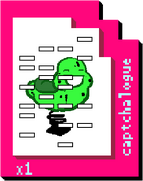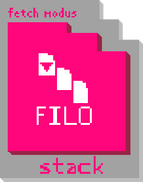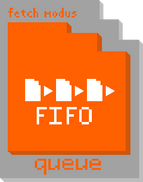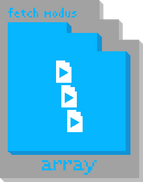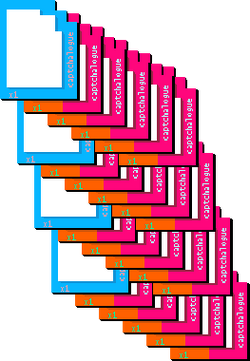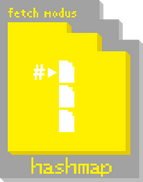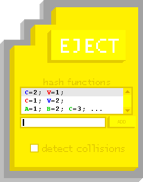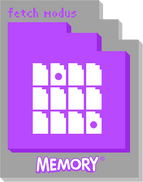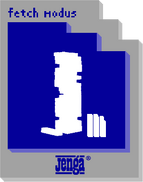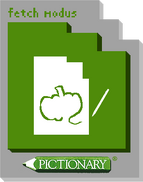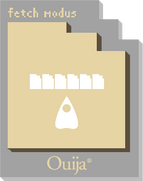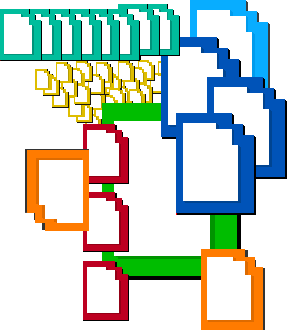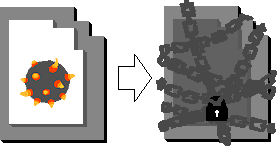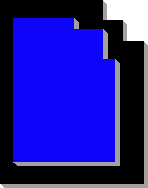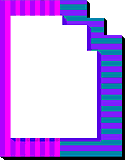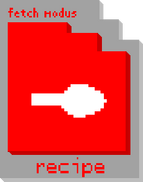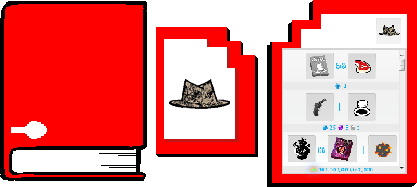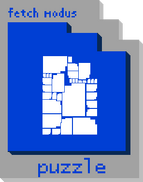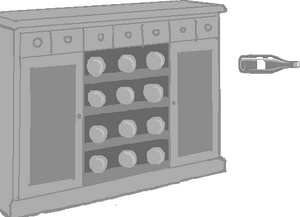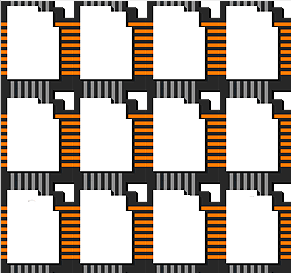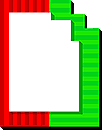(→Recipe) |
(→Trivia) |
||
| Line 205: | Line 205: | ||
[[File:JujuModus.png|left]] |
[[File:JujuModus.png|left]] |
||
Unique to [[Calliope]] and [[Caliborn]], whenever one of them captchalogues something it becomes only accessible to the other. The cards are marked with cherry red and lime green. After Caliborn takes full control of the body, the modus is {{HS|7345|shown}} to only be in two shades of red. This may be a reference to not only his blood color, but also his role as a [[Class#Lord|Lord]] of [[Aspect#Time|Time]], or may simply be the result of no longer having a second party to make it exclusively accessible to. |
Unique to [[Calliope]] and [[Caliborn]], whenever one of them captchalogues something it becomes only accessible to the other. The cards are marked with cherry red and lime green. After Caliborn takes full control of the body, the modus is {{HS|7345|shown}} to only be in two shades of red. This may be a reference to not only his blood color, but also his role as a [[Class#Lord|Lord]] of [[Aspect#Time|Time]], or may simply be the result of no longer having a second party to make it exclusively accessible to. |
||
| + | ===Sweet Bro's modus=== |
||
| − | ==Trivia== |
||
| + | [[File:Sweet-bro-modus.gif|right]] |
||
| − | *Sweet Bro appears to have a Sylladex in the [[Sweet Bro and Hella Jeff]] {{SBAHJ|custom|movies/SBAHJthemovie1.html|movie}}. |
||
| + | Sweet Bro appears to have a Sylladex in the [[Sweet Bro and Hella Jeff]] {{SBAHJ|custom|movies/SBAHJthemovie1.html|movie}}. It's unclear whether this is actualyl a separate modus, or just uniquely colord captchalogue cards, or indeed even captchalogue cards at all. Regardless, that's the closest approximation for what the objects appear to be. If it is indeed a fetch modus, captchaloguing appears to involving rapidly dancing back and forth. Despite Sweet Bro's best efforts, however, the nanchos continued to fall. Whether he was not close enough, his moves were not fresh enough, or whether some third factor was involved, is unclear. |
||
[[Category:Homestuck concepts]] |
[[Category:Homestuck concepts]] |
||
Revision as of 22:09, 27 August 2014
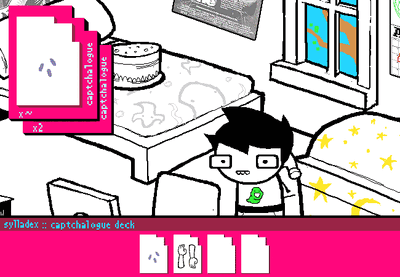
John Egbert's initial Sylladex
The Sylladex is the inventory system in Homestuck. Most player-controlled characters have a Sylladex to store and retrieve artifacts from, which consists of two decks of cards: the Captchalogue Deck and the Strife Deck.
The use of the Decks is not obligatory, it is merely a common way of carrying a lot of different items at once. These cards have codes on their backs that can be entered on the Punch Designix to create a punched card.
The word "sylladex" is presumably a portmanteau of "syllabus" and "index"; its plural is "sylladices". It's also possible that it's parodying the "Pokedex" from the Pokémon series.
None of the Exiles have a sylladex, so they must always carry objects in their hands. While Midnight Crew members do not have a Sylladex, their inventory allows them to hold five weapons and one item. (all members use a Deck of Cards/Storage Item to work around this rule.) This inverts Problem Sleuth's inventory system of five items and one weapon.
Captchalogue Deck
The word "captchalogue" is a portmanteau of the words "captcha" and "catalogue". The word "captcha" hints the codes on the back of each card.
The Captchalogue Deck is where artifacts are stored to be used later. Artifacts of any size and shape are stored on Captchalogue Cards, and while stored, they have no physical size or weight (so while John Egbert is unable to actually use a Sledgehammer on his own, he is still able to carry it around in his Sylladex), making the Sylladex much like a magic satchel.
Some sylladices can store larger objects than others, as seen here, where John's Dad stored ten tons of tobaccos and a car, among other things. John later stored The Tumor there.
However, there is a limit to how many different items can be captchalogued, based on the number of cards in the character's deck. Captchalogue cards can be added to the Captchalogue Deck by captchaloguing them and then forcing them out of the deck. Once a player has too many cards to line up side-by-side on the screen, the cards are arranged in stacks. Early on, John's deck is arranged in thirteen stacks of four, mimicking the suits and ranks of playing cards (which, like captchalogue cards, come in decks).
Also, living things can apparently be captchalogued, however it is unknown what it feels like to be inside a captchalogue card. It is also unknown if a person can captchalogue himself/herself, though this would probably be unlikely, since doing so would create an infinite recursive loop due to the captchalougue card being held by the player, who is stored in the card.
Apparently, sylladex users are capable of selectively removing one item from a card if more than one is contained within it, though this is likely a highly uncommon occurence.
Punched Captchalogue Card
Punched cards are captchalogue cards that have been punched using the Punch Designix. The items stored in these cards can't be retrieved, but they can be duplicated using the other items from the Phernalia registry. To use a punched card, one must place it in the Totem Lathe to carve a Cruxite dowel into a totem unique to that card. That totem can then be used in the Alchemiter to re-create the object on the card, as long as one has the required grist.
One punched card, called a pre-punched card, is available in the phernalia registry at the beginning of Sburb. John Egbert created the Cruxite Apple, Rose Lalonde created the similar Cruxite Bottle, Dave Strider created a Cruxite Crow's Egg, and Jade Harley created a Cruxite Dog Piñata.
Items can be combined by overlapping cards, thus obscuring some holes (like a bitwise AND operation) or by punching one card with both items' codes (like a bitwise OR operation). It appears that the operation used only determines which item used is the primary one, as seen with the Pogo Ride and the Sledgehammer; overlapping cards created a Pogo Hammer whereas double-punching a card made a Hammerhead Pogo Ride.
It appears that combining items rather than cards (i.e. drawing on a poster with crayon) still changes the item's code, similar to how the code would change if you simply combined the cards.
Fetch Modi
The fashions in which artifacts are stored to and retrieved from the Sylladex depend on the currently active Fetch Modus. The active Fetch Modus can be chosen as long as the Sylladex has the card with the desired Fetch Modus. Each Fetch Modus has a unique color given to all Captchalogue cards in a Sylladex that uses it. When outside of a Sylladex, Captchalogue cards are red. Each Fetch Modus is more different from the last: some Fetch Modi are based on data structures, some are based on popular board games, some are just mundane, like Dad's, which is a wallet, or the trolls', which are hard to fit into a single short sentence.
The back of a Fetch Modus stores the options menu, which can be used to modify the Modus in various
ways
.
Stack
John Egbert's first Sylladex Fetch Modus, signified by a bright magenta Sylladex and matching Captchalogue cards. Captchalogue cards are arranged in a stack, and the player can only use or otherwise interact with the one at the top of the stack. The top card may also be combined with the previous card if doing so is logical (or if the objects can be physically forced into one another), or use it with the previous card. If an object is picked up while the Sylladex is full, the item at the bottom of the stack will be dropped.
Even though his Sylladex is set to Stack by default, John finds his Stack Fetch Modus card under his Magic Chest after Rose moves it using Sburb. This is likely because he had used it already and then lost it.
Interestingly, when Dave asked John how he retrieved things, John replied "one at a time i guess. and if i put too much in, something falls out." Not only does that have little relevance to Dave's question, but Dave was also able to identify Stack from this description, even though it could've applied to just about any other Modus. Though, this may be because it is a snarky answer avoiding the question, and if he was using something more interesting, he would have actually answered it.
This fetch modus is based on the stack data structure.
Queue
The second Fetch Modus John obtains, signified by an orange Sylladex and matching Captchalogue cards. It is essentially the opposite of the Stack, in that only the card at the bottom of the deck (the one that was added before any of the others) may be used directly.
John finds the Queue Fetch Modus card in a copy of Data Structures for Assholes.
Though John had a separate card for his Stack and Queue Modi, they were identical cards with different settings, since John could switch either card to fulfill either Modus. He later combined the two with the Modus Control Deck, thus allowing him to draw cards from either side of his "Queuestack" without the inconvenience of having to switch his Modus type back and forth.
This fetch modus is based on the queue data structure.
Array
The third Fetch Modus John obtains, originally intended as a birthday present from Dad. It is light blue in color. It supposedly allows John to fetch any card at will. John considers this to be excessively boring because it cannot be weaponized, however, and uses the Modus Control Deck he obtained from Dad's Room to combine it with his Queuestack, thus creating an Array of four 6-card Queuestacks. While more amusing, John actually makes his fetch modus more limited than just the Array alone.
This fetch modus is based on the array data structure.
Queuestack Array
John uses the Modus Control Deck to combine his Stack, Queue, and Array Modi. It does seem much more interesting to use than an Array modus, but has less accesibility to Captchalouged items. The way this Modus works is it divides all the captalouge cards into 4 arrayed Queuestacks with 6 cards each. From there, John can take a Card from the first or last card from any of the Queuestacks.
Tree
Rose Lalonde's Fetch Modus, Trees, is signified by a lime green Sylladex and matching Captchalogue cards. She admits that it isn't exactly practical but initially considers it elegant. The first item is captchalogued in the Root Card. Any more items that are picked up are Branches attached to an existing card and, like the root itself, may have up to two branches of their own (making this a binary tree). Branches with no further branches of their own are called Leaf Cards. Cards are sorted alphabetically: they join the left branch of an existing card if they come alphabetically before that card, or the right branch otherwise. Nothing has been shown to demonstrate what happens if she has two identical objects. The only cards Rose may access are the root or leaf cards; intermediate branches can only be accessed by moving them to the root or leaf positions via the optional auto-balancing feature, which (like an AVL tree) rearranges the tree whenever it becomes too unbalanced. If she uses the Root Card, all of the items below will fall out of the sylladex, which is why she has set it to Leaf instead of Root.
Since Rose never captchalogues more than her cards can hold, we are never shown an object being forced out of her deck or more cards being added to it.
This fetch modus is based on the binary tree data structure.
Hash Map
Dave Strider's Fetch Modus, signified by a yellow Sylladex and matching Captchalogue cards. Hash maps work through a key-to-value lookup structure, making the Hash Map Fetch Modus the most like a traditional inventory. Each card in the deck is given an index from zero to the number of cards in the deck minus 1 (10 cards leaves an index range of 0 to 9). When an item is captchalogued into a Hash Map Sylladex, where it is placed into the card stack depends on the current Hash Function. If an object already occupies the card with the produced index, the item in the card is ejected from the Sylladex to make room for the new item. In order to retrieve an item from the stack, the character must perform an action related to the item with a keyword that will produce the same index as the card that holds the desired item. Items apparently are retrieved so long as a relevant command with an equivalent hash is uttered, regardless of Dave's actual desire to use the item. If the objects are retrieved this way, they are thrown out as if another item was placed in their card. Dave once accidentally ejected his "ninja sword" (hash 7) at a bird by yelling "stop" (hash 7) at it, killing it. Dave's reaction implies this was not intentional. The force of which the item ejects from the Sylladex may be related to how much emphasis is used on the command.
On the back of the fetch modus card are several options. One of them, a "potentially dangerous button," ejects every item in the Sylladex. Another option allows the user to change the hash function used to calculate indexes, though changing the hash function will eject all items too. A final option is a check box labelled 'detect collisions' which originally was unchecked. Now that it's checked, Dave is prevented from captchaloging an item when doing so will cause another item to be displaced and ejected, making captchaloging slower but safer.
It is notable that objects that are captchalogued don't have a set name. For example, Dave captchalogued multiple Shuriken (3) one at a time to avoid dislodging a Box (5) he had filled with Fireworks (5). This is after he spilled the Box of Fireworks (3) by replacing it with Nunchaku (3). Items that share the same index can be combined even if the combined name of the items wouldn't equal that index.
Dave later replaces this modus as a whole after receiving a new one from his alternate future self. This one is orange with yellow vertical stripes on the left side. It's unknown what the modus actually is, but considering the amount of cards Davesprite left Dave, and how easily he uses it, it's suggested to be something far less annoying; based on the colors, it could be a hash map combined with a series of queues to resolve collisions, which is how hash maps are usually used in the real world.
This fetch modus is based on the Hash Map Data Structure.
Hash Functions
- The hash function Dave uses most often gives each letter in the word of an item's name a value (2 for consonants and 1 for vowels), adds the numbers up, and divides the sum by the number of Captchalogue Cards in the deck. The index is the remainder. The letter "Y" can be used as either a consonant or a vowel, but only a hashmap noob would use such a cheap trick. (Dave has used this "cheap trick" at least once.)
- Another hash function switches the values, making vowels worth 2 and consonants worth 1.
- A third function gives letters their value based on the order they appear in the alphabet. (A=1, B=2, C=3, and so on.)
- Dave programs a fourth function in which each letter's value is the same as the letter would have in a game of Scrabble. Specifically, A=1, B=3, C=3, D=2, E=1, F=4, G=2, H=4, I=1, J=8, K=5, L=1, M=3, N=1, O=1, P=3, Q=10, R=1, S=1, T=1, U=1, V=4, W=4, X=8, Y=4, and Z=10.
Jade's Modus Set
Jade Harley has a whopping twelve Fetch Modi, which comprise the Modus Set that her Grandpa bought her for Christmas. All twelve of these Modi are based upon popular board games. Judging by the official product logos and trademark symbols, it is highly likely that these Modi can only be obtained via purchase.
The fact that these Modi are based upon board games rather than data structure is consistent with Jade's silly, playful nature and her apparent lack of interest in serious computing.
Jade also has a large amount of Captchalogue cards. She has 52 cards (the number of cards in a standard playing card deck), and when she has no Fetch Modus selected, they are arranged into thirteen stacks of four.
Memory
Based upon the beloved game of matching pairs of identical cards, this is Jade's preferred Fetch Modus, due to her powers of precognition. This Modus uses an even number of Captchalogue cards, which are purple. When an object is Captchalogued, it is stored in two random cards. In order to access an item, the two cards in which that item is stored must be selected, and it appears that all item positions are randomized when an item is captchalogued. For most people, this would be troublesome to say the least, but for the reason stated above, this Modus is perfectly suited to Jade. Also, her silly, playful nature causes her to flesh out her Sylladex with simple, brightly-colored objects (such as fruit, as we have seen), causing it to more closely resemble a child's card-matching game. During the fit of pages where the wrong items are selected (Mostly fruits), one has to understand that it's not Jade making the choices as she gives the reader control, while giving 'hints.' These hints were actually 100% correct, while the reader was a dumbass and picked elsewhere regardless.
Jenga
Based upon the nervewracking game of manipulating precariously-placed blocks, this Modus uses eighteen captchalogue cards, which are dark blue and violet. When the Modus is selected, it spawns a Jenga tower made of 54 Captchalogue Blocks (54 being the number of blocks in a standard Jenga tower). Each item, when captchalogued, is assigned to three random blocks in the tower. To retrieve an item, its three blocks must be removed. When an attempt is made to retreive a specific item, its blocks are highlighted. If the tower is toppled, all items assigned to completely toppled trios of blocks will be ejected. This system appears to be extremely unwieldy, due to the likely difficulty in moving the tower. Also, Jade's narcolepsy makes this Fetch Modus completely useless to her.
Pictionary
Jade chose this Fetch Modus based on a strong whim from the mysterious ethers of democracy, which is a fancy way of saying that Andrew put it to a vote. Its cards are mossy green. When selected, this Fetch Modus spawns a Captchalogue Scribblepad. Drawing a nearby item on it results in the captchaloguing of that item. Even if the drawing is a meaningless scribble, the Scribblepad will associate it with an item. If the Captchaloguing of an item that is not nearby is attempted, a ghost image of it will be captchalogued instead. Ghost images are unusable but have the same Captchalogue codes as their real counterparts, enabling a Sburb player with access to alchemical equipment to create them. (And, theoretically, any item that the player can draw can be created.) It seems to have a bit of trouble identifying drawings of overly simple or overly complex things, such as Jade's Tangle Buddies and her Eclectic Bass.
Nepeta uses a drawing tablet like Jade's as a computer, but is explicitly stated to not use the Pictonary modus, using something implied to be far more frustrating instead. Andrew Hussie is also seen using a Captchalogue Scribblepad as a graphics tablet in his highly indulgent self-insertion
into the story.
Unused Fetch Modi
The nine other game-based Fetch Modi have yet to be seen in action. Their names and postulated functions are as follows:
Boggle: The symbol for the modus says "Boggle Fetch Modus" in a snaking pattern on the Boggle grid. A possible speculation of its use is that the user has to find the name of the desired item in a Boggle puzzle. It could possibly randomize the name, since items do not have a set identity, i.e. a dollar bill may become a monetary note.
Monopoly: It can be postulated that one has to roll a number that lands on the space of the item desired; substitute properties for items. The modus could possibly allocate the item to multiple spaces when there is not a full set of cards/properties to play with.
Yahtzee: One can logically deduce that one has to roll a set that corresponds with a code assigned to a card: think Hash Map values with dice. For example, a lime may correspond to rolling a single pair, while an orange may correspond to rolling a full house. More important/powerful or otherwise less redundant items are likely given higher set values to attain.
Clue: It possibly works as follows: The desired card is split up and placed in the "envelope" of the modi. The card fragments, or 1/3cards, correspond to a Suspect, Room, and Weapon. The user is given some cards, but the remaining cards are split five ways, invisible to the user. In order to remove the item from the "envelope," one must successfully enter all corresponding values for the item: for instance, retrieving the Eclectic Bass by naming "Professor Plum in the Library with the Wrench" (Professor Plum + Library + Wrench). This would require either precognitive ability, which suits Jade, or an exhaustive process of Suggesting and eliminating every other possible value.
Connect Four: It could operate by splitting the cards into four pieces and then providing the user with random game pieces, one at a time. The item would then be retrieved by connecting the four corresponding fragments of the item.
Battleship: It's plausible that an item would have to be retrieved from the modus by sinking the ship that corresponds to the item desired. This would require precognitive ability, which suits Jade.
Ouija: Is listed below in its own section. May function slightly differently to Aradia's version, probably with English letters.
Guess Who: This is likely completely random and impossible to scientifically operate. Much like another modus that we know about. “hOnK HoNk :o)”
Operation: This one is likely very straightforward: extract the cards without touching boundaries provided by the modus.
Wallet
Dad's Fetch Modus, signified by brown Captchalogue Cards (the same shade of brown as the Clue Fetch Modus). It stores Captchalogue cards in a wallet, and any card can be retrieved from the wallet at any time. It functions similar to a normal wallet and is refreshingly uncomplicated. It is more or less the Array Modus without size restriction, and with tangibility, meaning the entire Sylladex can be passed from person to person. The Modus component seems to be bound to its physical wallet counterpart. When John finds it, he discovers that this Modus has, in addition to an 'eject' button, a 'polish' button, undoubtedly for effortless polishing of the wallet.
The cards of this modus are able to store incredibly ginormous things - the car that it contained is significantly larger than the harlequin doll, which John couldn't captchalogue with his previous modus, as well as the Tumor, which is so incredibly ginormous it's almost not funny. Jane also used her Dad's wallet to store an entire mirrored obelisk temporarily, before realizing she needed it to open a door.
Encryption
Karkat Vantas' Fetch Modus, signified by grey Captchalogue cards. When an item is captchalogued, a card safe (with a weight possibly invariably greater than that of the item captchalogued) is produced. To retrieve an item, you have to hack the code to open the card safe. Since the safes become physical objects, the very obvious drawback to this modus is the inability to take the safes with you; they just end up recaptchalogued into a (perhaps guaranteed heavier) card safe. Supposedly, Karkat eventually swaps modi with Sollux, who naturally is better suited to cracking codes (and, being telekinetic, presumably can carry the heavy safes around just fine). While this modus causes the item to be secure against thieves and other ne'er-do-wells, it is not necessarily safe, especially from the rage of a hungry custodian.
Ouija
Aradia Megido's fetch modus. The spirits decide what item is retrieved, leaving Aradia with little or no control as to what item is retrieved. However, it perfectly suits Aradia and her fatalistic beliefs as she does things based on the voices she hears. Aradia's planchette points to the letters that spell Bing, as in, Bing Crosby. Who's that douchebag? On Earth, the planchette is supposed to highlight the letters with its lens.
Miracle
Gamzee and Kurloz Makara's Fetch Modus. By far the most complex and confusing Modus ever seen, Gamzee has absolutely no idea how it works, and doesn't want to know. Most of the time, he would captchalogue an item only to watch the colors that the Modus produces.
The Modus seems to work a bit like two of the seen Jade's Modi, Memory and Jenga, in the fashion that it stores the captchalogued item in multiple cards. However, it is complicated by the fact that the cards themselves have six colors: teal, green, orange, brown, blue and citrine, and the Modus seems to only use one card (if any) of each. When retrieving an object, the sylladex can eject an item from a seemingly random card very, very far. These are most likely not its only functions. It has been noted that successfully retrieving the item you want with this modus can take a miracle. Despite outward appearances showing this modus to be exceedingly complex, it has the potential to be the most useful modus of all. After having his soda chucked across the entire troll ocean, Gamzee is shown to be able to simply reach into one of the cards and take the item he wanted (Though this may just be Gamzee, of all characters, to even ponder the thought as most other people are confused by practical thinking, such as “Put it... down?”). This shows that the modus can hold several items at once, and all can be accessed at any time. And bonus, shiny colors! However, this is probably overthinking, and it is just incredibly random in its function, as the name miracle implies that there is no science to it.
Chastity
Kanaya Maryam's Fetch Modus, signified by light grey Captchalogue cards. This Fetch Modus locks up the item, rendering it impossible to use unless the key - which seem to be physical objects rather than simple abstractions - is found. The keys themselves are locked in a chest, at exactly when and where Kanaya is predestined to use the item. Obviously based on the chastity belt (fitting in with her being the Virgo troll), as the key will only be found when and where Kanaya is ready to use the item. The modus releases the Matriorb so Eridan can destroy it, indicating it was never meant to be hatched.
Eight Ball
Vriska Serket's Fetch Modus, signified by black Sylladex cards. Unusually (but understandably, given their function), the portions of the cards where objects are normally displayed is blue. Although this Fetch Modus has never been explained or even named, its method of functioning is clear. When an object is captchalogued, it is sealed within a Magic 8-Ball. Presumably, releasing the object involves breaking the ball that contains it (explaining the many broken 8-balls in Vriska's room). Shaking the ball and looking at the "answer" merely reveals the code. The only code ever shown was written very clearly, with only a solid blue background color, white stripes, and white text. It's possible that all captcha codes are rendered as such with this modus, and therefore made easier to read.
Scratch and Sniff
Terezi Pyrope's Fetch Modus signified by multicolor striped cards, vertical pink and purple on the left, and horizontal darker purple and blue on the right, looking similar to a modus constructed with a Modus Control Deck. The modus apparently allows any item to be retrieved at any time, but the items can only be identified and selected via smell. This works well for Terezi due to her uncanny ability to smell colors.
Recipe
Jane Crocker's Fetch Modus, signified by red Captchalogue cards and a white Betty Crocker logo on the cartridge. It is a fairly new experimental innovation. Anything captchalogued will be added to a recipe book. Flipping the card, instead of showing the item's captchalogue code, shows a 'recipe list' of what items could be combined to alchemize it (it is noted in the story that the recipe framework is completely theoretical, since, at the time, Sburb, with its alchemy system, was yet to be played). Other than this, it seems to function identically to the Array Modus. It's worth noting that different recipes on the back of the same card have vastly different grist costs. This could mean a number of things - either different combinations resulting in exactly the same item have separate costs, or the recipes are actually for different variations of the item instead of being for the exact object and captchalogue code on the card. Perhaps even that the codes themselves are just one variable in determining the content of the card, and the amount/type of grist is also counted (explaining how the Gristwidget is able to recycle stored items; consider that combining two items results in the same code as combining two other items, yet results are different because of differing proportions of grist cost. The scale of grist cost is then used to determine the item's size). The modus also allows the user to captchalogue several items at once.
The Recipe Modus itself is alchemizable from the Array Modus and the Cook Book, and costs 11 units of Build Grist. Jane's Dad got her the Recipe Modus for her birthday.
Fibonacci Heap
One of Jane's old Fetch Modi. She was glad to see the back of it, figuratively speaking.
There is a real life Fibonacci heap data structure.
Puzzle
Jake English's Fetch Modus. Signified by blue Captchalogue cards, it can store items of any size, turning them into cards of various sizes which Jake must then rearrange in order for them all to fit properly. If they do not fit, naturally, the items that do not fit are ejected. Until recently, the majority of the modus' space was taken up by the remains of his house.
This modus is likely a parody of a common inventory system in video games, featuring in such titles as Resident Evil 4 or Deus Ex: Human Revolution.
Message in a Bottle
Roxy Lalonde's Fetch Modus, signified by light grey Captchalogue cards. The modus shrinks the cards, storing them in grey bottles similar to Rose's Cruxite artifact, and then stores the bottle in a large grey cabinet. The object in the card is released by smashing the bottle containing it.
It should be noted that when Roxy attempted to captchalogue paradox ghost imprint slime, the modus did not store the slime in a card beforehand, but put the slime into a bottle instead. We are not sure if this applies to all liquids or just ghost slime; but it is definitely useful for Roxy.
Tech-Hop
Dirk Strider's Fetch Modus. The cards in this modus are black with grey and orange stripes. The way this modus organizes items is by placing them into grey Shade Columns and orange Groove Rows. All items in a Shade Column must rhyme in some way (such as "GameBro" and "Faygo") and all items in a Groove Row must have some thematic similarity (like a weapons row or a 'cool bros' row). There are ways it can be used for rap battles much like Hash Map, but it is a little more sophisticated and complicated. Its name and function are based on And It Don't Stop, an older comic by Andrew Hussie about rap and robots.
Juju
Unique to Calliope and Caliborn, whenever one of them captchalogues something it becomes only accessible to the other. The cards are marked with cherry red and lime green. After Caliborn takes full control of the body, the modus is shown to only be in two shades of red. This may be a reference to not only his blood color, but also his role as a Lord of Time, or may simply be the result of no longer having a second party to make it exclusively accessible to.
Sweet Bro's modus
Sweet Bro appears to have a Sylladex in the Sweet Bro and Hella Jeff movies/SBAHJthemovie1.htmlFile:Movie. It's unclear whether this is actualyl a separate modus, or just uniquely colord captchalogue cards, or indeed even captchalogue cards at all. Regardless, that's the closest approximation for what the objects appear to be. If it is indeed a fetch modus, captchaloguing appears to involving rapidly dancing back and forth. Despite Sweet Bro's best efforts, however, the nanchos continued to fall. Whether he was not close enough, his moves were not fresh enough, or whether some third factor was involved, is unclear.

